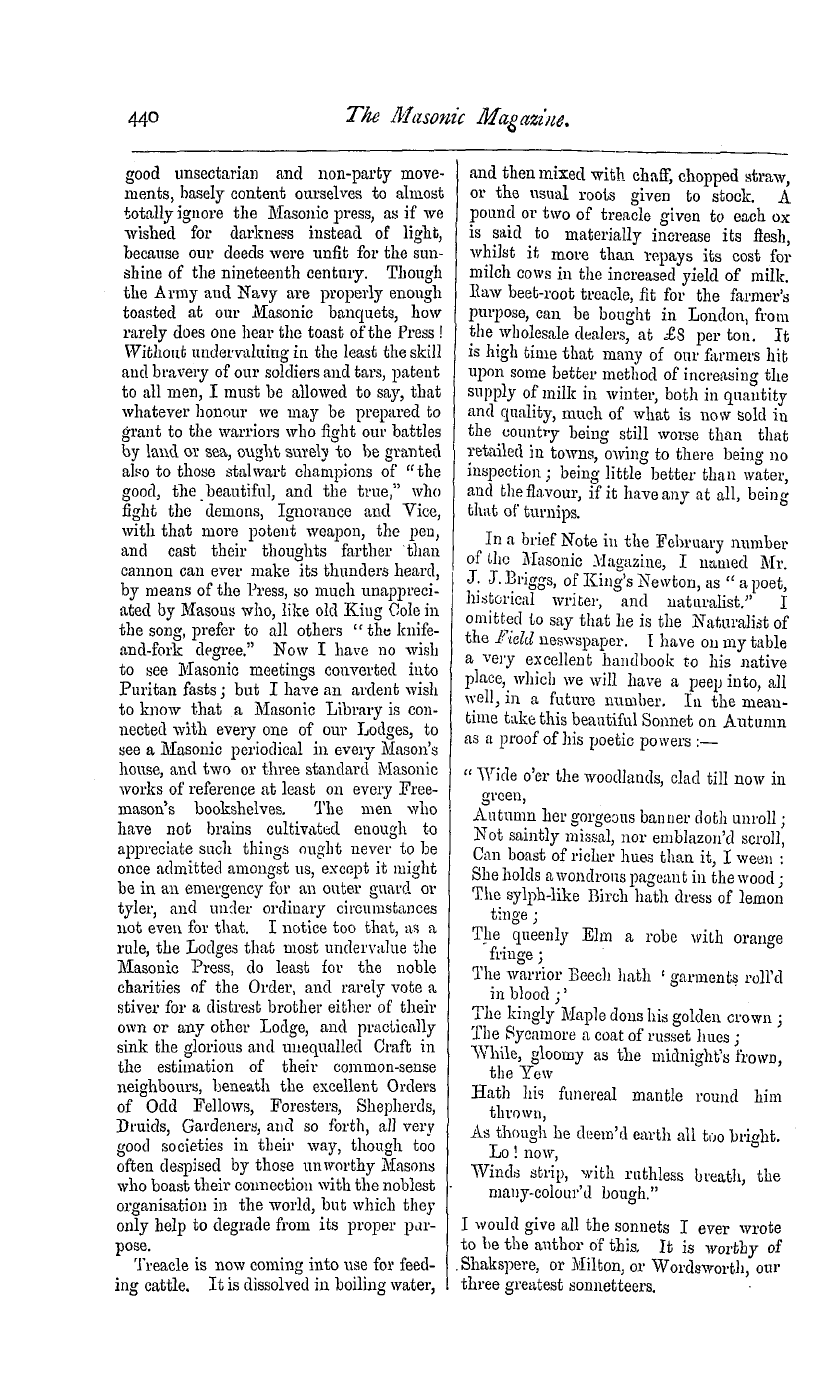Note: This text has been automatically extracted via Optical Character Recognition (OCR) software.
An Historical Account Of Master And Free Masons.
in point of time and preference . * The style denominated " The Teutonic , or German , " was the invention of this bold and very highly scientific order of architecture , which may be referred to those chosen and selected artists , who have shoAvn themselves ,
in repeated instances great mathematicians , and perfectly experienced in mechanics ; and who , on . assured principles of science , executed some of the boldest and most astonishing works Avhich Avere ever erected by man .
It has been observed by a celebrated modern architect , that " the incorporation of masons in the thirteenth century , may have finally brought the pointed arch to that consistency and perfection to which it had not then attained . " !
Two principal colleges were formed , at Strasburgh and at Cologne , by the mastermasons of those stupendous cathedrals , who at that period assumed , and Avere allowed , a jurisdiction over all inferior societies , wherever they exercised their
craft . In these conventions regulations were formed , which were religiously preserved under the strong sanction of good
faith and secrecy . They were probably very numerously attended , at least by master-masons ; and as all communications relative to their artj were delivered orally , the subordinate associates had only the experience which the practice afforded them of applying the principles thus detailed . A
difficulty occurs , if it be considered that none but oral instruction was giveu even to the master-masons , hoAV to account for plans and AVOrking-draAvings which have been preserved in the archives of so many of the foreign cathedrals . We know the
cause of their destruction in England . It has been asserted , that in the early part of the thirteenth century , "The Colleges of Masons , " in every country of Europe where they had assembled themselves , received the blessing of the Holy
See , under an injunction of dedicating thenskill to the erection of ecclesiastical buildings ; and that certain immunities Avere conceded to them , such as forming themselves into small and migratory societies , | -j under the government of a master of the craft , with the privilege of taking apprentices , who , after a due initiation , became
Note: This text has been automatically extracted via Optical Character Recognition (OCR) software.
An Historical Account Of Master And Free Masons.
in point of time and preference . * The style denominated " The Teutonic , or German , " was the invention of this bold and very highly scientific order of architecture , which may be referred to those chosen and selected artists , who have shoAvn themselves ,
in repeated instances great mathematicians , and perfectly experienced in mechanics ; and who , on . assured principles of science , executed some of the boldest and most astonishing works Avhich Avere ever erected by man .
It has been observed by a celebrated modern architect , that " the incorporation of masons in the thirteenth century , may have finally brought the pointed arch to that consistency and perfection to which it had not then attained . " !
Two principal colleges were formed , at Strasburgh and at Cologne , by the mastermasons of those stupendous cathedrals , who at that period assumed , and Avere allowed , a jurisdiction over all inferior societies , wherever they exercised their
craft . In these conventions regulations were formed , which were religiously preserved under the strong sanction of good
faith and secrecy . They were probably very numerously attended , at least by master-masons ; and as all communications relative to their artj were delivered orally , the subordinate associates had only the experience which the practice afforded them of applying the principles thus detailed . A
difficulty occurs , if it be considered that none but oral instruction was giveu even to the master-masons , hoAV to account for plans and AVOrking-draAvings which have been preserved in the archives of so many of the foreign cathedrals . We know the
cause of their destruction in England . It has been asserted , that in the early part of the thirteenth century , "The Colleges of Masons , " in every country of Europe where they had assembled themselves , received the blessing of the Holy
See , under an injunction of dedicating thenskill to the erection of ecclesiastical buildings ; and that certain immunities Avere conceded to them , such as forming themselves into small and migratory societies , | -j under the government of a master of the craft , with the privilege of taking apprentices , who , after a due initiation , became















































